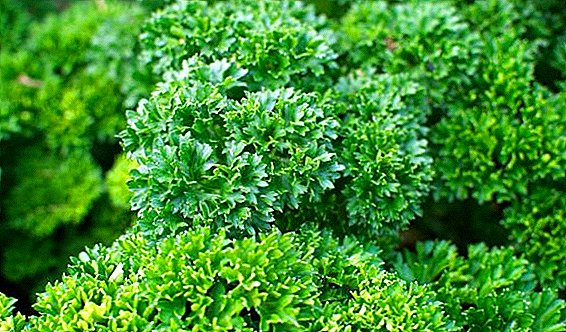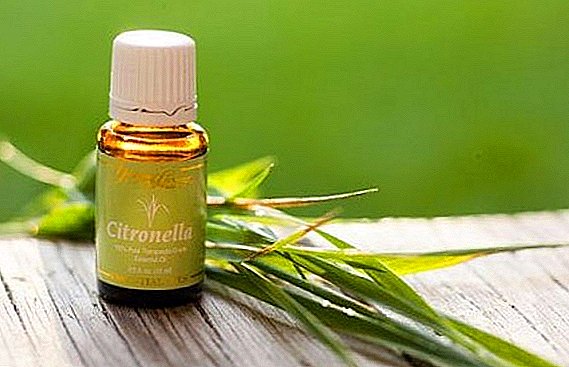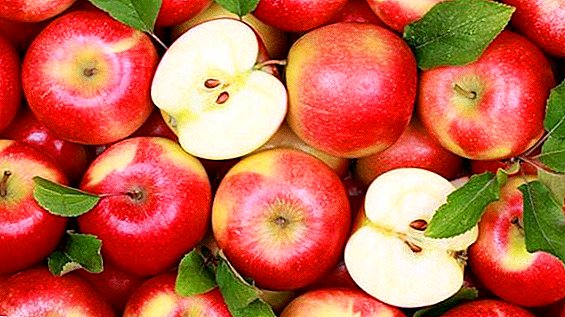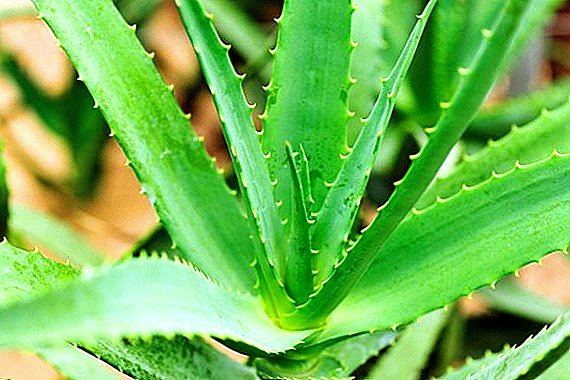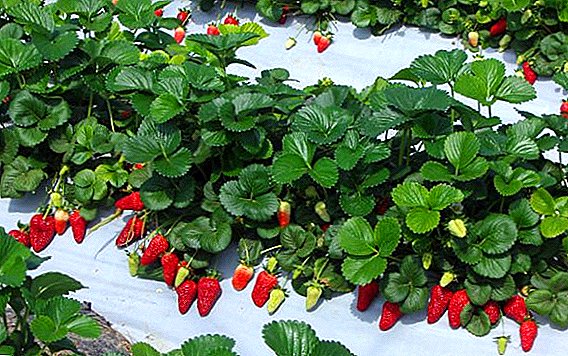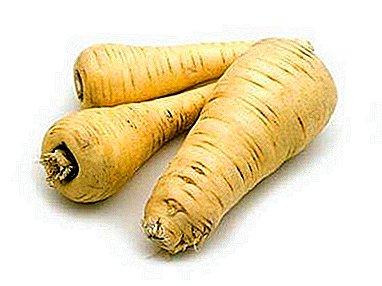
Pasternak is a tasty and healthy vegetable! In Russia, he has been known since the 17th century, and references to him have been found since the 1st century BC.
It became a cultural plant thanks to the ancient Romans - it was served on the table both in the houses of the Roman nobility and in the camps of the legionaries.
In the Middle Ages, the roots of Pasternak were included in the daily diet of the entire population of Central Europe.
Our ancestors have always appreciated the incredibly useful properties of this root and used in medicinal recipes.
Botanical definition and description
Pasternak (Pastinaca sativa) - a two- or perennial herb from the family of Umbrella Umbelliferae (also known as Celery Apiaceae) of the Genus Pasternak (Pastinaca). A plant with a long growing season. It grows to about 1-1.5 meters in height in the first year and forms underground roots. Crop is usually harvested after the first seasonal frosts, when the roots reach 14 to 20-25 cm in length, pulling out (uprooting) the whole plant along with the root.
 Moderate frosts are necessary for a good harvest, they facilitate the conversion of most starch into sugars and help the development of long, narrow and hard parsnips. If the parsnip is left untouched, the plant throws umbrella buds out of small yellow flowers.
Moderate frosts are necessary for a good harvest, they facilitate the conversion of most starch into sugars and help the development of long, narrow and hard parsnips. If the parsnip is left untouched, the plant throws umbrella buds out of small yellow flowers.
Flowering occurs from early June to mid-July. (although some plants can continue flowering until mid-September). Flowers produce large pale yellow seeds. Leaves alternate pinnate folded, branched. Each leaf has 5-15 oblong leaflets with jagged jagged edges and deep lobes.
Delicate spicy aroma is a bit like parsley. Indeed, parsnip has many similarities with other members of the Apiaceae family, such as parsley, carrots, coriander, fennel, dill, celery, lovage, cumin, and others. Botanists know about 15 types of parsnip, of which parsnip is cultivated around the world today.
Chemical composition
Vegetable is rich in many healthy phytonutrients (phytonutrients), flavonoids, polyacetylene antioxidants (falkarinol, falkariniol, panaxidiol and methylfalkarindiol) practically not found in other vegetables. Only 100 grams. product provide the body's need for the daily rate of vitamin C!
Pasternak is one of the first places among the root vegetables for the content of easily digestible carbohydrates. This is one of the rich sources of dietary fiber, a source of vitamins B1, B2, B6, K and E, a significant amount of minerals. Moreover, his juicy root vegetable does not contain cholesterol.
| The nutritional value of parsnip Pastinaca sativa (100 gr) | ||
| Criterion | The nutritional value | Percentage of daily need |
| Energy | 75 kcal | 4% |
| Carbohydrates | 17.99 g | 14% |
| Protein | 1.20 g | 2% |
| Fat | 0.30 g | 1% |
| Cholesterol | 0 mg | 0% |
| Dietary fiber | 4.9 gr | 13% |
| Vitamins | ||
| Folate | 67 mcg | 17% |
| Niacin | 0.700 mg | 4% |
| Pantothenic acid | 0.600 mg | 12% |
| Pyridoxine | 0.90 mg | 7% |
| Riboflavin | 0.050 mg | 4% |
| Thiamine | 0.090 mg | 7,5% |
| Vitamin A | 0 | 0% |
| Vitamin C | 17 mg | 29% |
| Vitamin K | 22.5 mcg | 19% |
| Electrolytes | ||
| Sodium | 100 mg | ˂1% |
| Potassium | 375mg | 8% |
| Minerals | ||
| Calcium | 36 mg | 3,5% |
| Copper | 0,120 mg | 13% |
| Iron | 0.59 mg | 7,5% |
| Magnesium | 29 mg | 7% |
| Manganese | 0.560 mg | 24% |
| Phosphorus | 71 mg | 10% |
| Selenium | 1.8 mcg | 3% |
| Zinc | 0.59 mg | 5% |
Appearance, unlike parsley
Parsley root has a fantastic carrot smell with a hint of celery, turnip and parsley leaves. The flavor of parsnip is somewhat sweet. But, going to the supermarket, you can easily make a mistake in choosing, because externally the roots of both species look almost the same: the color of the root, like parsnips and parsley, is white, cream or light yellow.
And yet there is one distinguishing feature. The stems of parsley are as if a direct extension and extension of the root. The stems of parsnip appear to grow from the inside of the root, forming a round dent at the top. After removal of the stems, the dent remains and is easily noticeable.
A photo
In the photo below you can see what white parsnip root is, how this plant grows and looks.



Indications and Contraindications
Beneficial features
Parsnip root has found application in many recipes of traditional medicine, as a medicinal plant. The advantage of a vegetable is that it has a calming effect on:
- nervous system;
- improves digestion and blood circulation;
- strengthens blood vessels and capillaries;
- supports optimal hormones;
- reduces puffiness;
- treats renal;
- colds;
- pulmonary and bronchial diseases;
- relieves stomach cramps and liver cramps.
Restriction in use
And yet this vegetable is not useful for everyone! Restriction in the use of parsnips can be age. There are contraindications to its use for children under 1 year old and people over 75 years old. Caution is recommended for patients taking anti-cancer drugs and drugs that cause photosensitivity, as the combination may increase side effects. People with diseases should be very careful:
- photodermatosis;
- diathesis;
- emphysema;
- asthma;
- diabetes;
- severe deviations in the cardiovascular system.
Parsnip extracts should not be taken for bleeding and pregnancy. These contraindications are due to possible allergenic effects.
How to use a vegetable?
In cooking
 Vegetable is added to:
Vegetable is added to:
- soups;
- casseroles;
- stew;
- goulash;
- of bread;
- sweet pastries.
The most skilled cooks can cook pancakes and pancakes. Used for making marmalade, jam and sweet flour for cakes. In its raw form, chopped on a coarse grater, the vegetable is added to various vegetable and fruit salads, fillings.
It is cooked with mashed potatoes, leek, cauliflower and other vegetables, served with fish, meat, poultry. Parsnips are dried as seasoning for hot dishes and preserved.
Very tasty dishes of root vegetables, baked in the oven and steamed:
- for this, the vegetable is cut into small pieces;
- placed in an oven or a double boiler;
- aged 8-12 minutes until fully cooked, with the addition of salt and spices.
Parsnips are cooked in a hearty and tender mash. For this dish, medium-sized pieces of vegetable are boiled and then warmed up with butter. Mashed potatoes are salted and diluted with warm milk.
Original and useful chips made from parsnip, while preparing them is very easy!
- A deep frying pan with poured vegetable oil is heated to 180ºС.
- Root vegetables are cut into thin slices.
- Small portions dipped in hot oil.
- Fry for 45 seconds until golden brown.
- Spices and salt are added to taste.
There are many recipes that reveal the secrets of cooking a variety of dishes from parsnip.
In medicine
In folk medicine, parsnip is always highly valued.
- Respiratory system.
- the plant is used to treat many diseases associated with infection of the respiratory tract;
- to eliminate cough and sore throat;
- pneumonia;
- asthma;
- bronchitis.
 A heart.
A heart.- strengthens the heart muscles;
- improves blood circulation;
- supports the body's aquatic environment.
- Blood and blood vessels.
- regulates blood pressure;
- strengthens the walls of blood vessels;
- vitamins C, B9 and iron, present in parsnips, are crucial for blood formation and prevention of anemia, especially in women;
- Vitamin E helps in the creation of red blood cells, increases the oxygen transport in the body.
- Digestion of food.
- stimulates appetite;
- facilitates digestion;
- eliminates disorders of the gastrointestinal tract.
- Teeth and gums.
- Vitamin C and folic acid in parsnips improve overall oral health;
- prevent gingivitis;
- inflammation of the tongue;
- toothache;
- bad breath;
- support the health of connective tissues and gums;
- strengthen teeth.
- Eyes.
- prevents various eye problems, including macular degeneration;
- deterioration of visual acuity in the elderly.
- Stomach. Soothes spasms and severe stomach pain.
- Intestines.
- stimulates faster and easier intestinal peristalsis;
- eliminates bloating and excessive gas formation.
- Kidney.
- cleans the kidneys activates their function and urination;
- reduces inflammation of the bladder and urinary tract;
- removes kidney stones and sand.
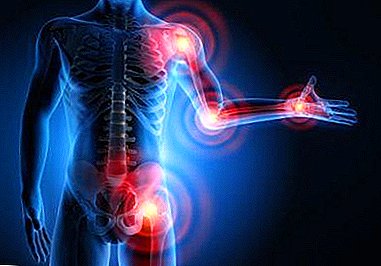 Bones and joints.
Bones and joints.- effective in rheumatoid arthritis;
- gout;
- rheumatism.
Manganese contained in vegetables is a co-factor of glycosyl transferase, which helps in restoring cartilage and strengthening bones, and stops osteoporosis.
- Depression.
- eliminates anxiety;
- neurosis;
- insomnia
- Leather.
- stimulates sweating;
- reduces heat;
- Antioxidants and Vitamins E and C restore skin cells and prevent premature aging.
- Weight. Regular consumption reduces body weight.
Folk recipes with step by step instructions
To increase potency
 Ingredients:
Ingredients:
- 2 table. spoons of chopped parsnip root;
- honey (sugar).
Cooking:
- fill the roots with 250 ml of boiling water;
- insist 2 hours;
- strain.
Reception: 1/3 cup 4 times / day 15 minutes before a meal with honey or sugar.
Course: 14-21 days depending on the prevention or treatment.
To restore bone and cartilage tissue
 Ingredients:
Ingredients:
- 250 grams of parsnip root;
- 3 lemons;
- 120 grams of garlic.
Cooking:
- all components are crushed and mixed;
- transfer the mixture to a glass 3-liter jar;
- pour boiling water on the neck;
- tightly wrap, insist 8-12 hours.
Reception: 70 grams of infusion 3 times / day 30 minutes before meals.
Course: 3-4 months.
For the prevention of cardiovascular diseases
 Ingredients:
Ingredients:
- 30 grams of parsley;
- 100 ml of parsnip;
- 5 grams of valerian root;
- juice from parsnip root;
- 2 teaspoons of honey.
Cooking:
- Pour over parsley, parsnip and chopped valerian with 200 ml boiling water;
- insist 1 hour;
- strain;
- mix the resulting infusion with the juice of parsnip root;
- add honey
Reception: 3 tables. spoon 2-3 times / day for 1 hour before meals.
Course: 21 days.
For recovery after surgery
Tonic drink
 Ingredients:
Ingredients:
- parsnip roots;
- honey.
Cooking:
- squeeze juice from parsnip;
- mix with a small amount of honey to improve the taste.
Reception: on 1 table. spoon 3 times / day 30 minutes before meals.
Recipe appliqués
 Ingredients: 3 table. tablespoons chopped parsnip root.
Ingredients: 3 table. tablespoons chopped parsnip root.
Cooking:
- fill the roots with 250 ml of boiling water;
- insist 5 minutes;
- strain.
Reception: drink infusion, and spin to apply to painful places, placing them in a gauze (cloth) bag.
Course: to the completion of the postoperative (rehabilitation) period.
The use of vegetables in baby lures
In many European countries, parsnip belongs to the list of recommended baby foods from 6 months, as a component of a variety of vegetable stews. The root vegetable should be introduced into the children's diet gradually. and very carefully, adhering to the general principles and observing the responses of the child’s body.
For the prevention and treatment of childhood diseases, use significantly reduced doses in prescriptions. For children from 1 year old, vegetables are offered in small doses, for example, in the form of weakly concentrated broth or in soups. After 1.5-2 years old, children are made from parsnip by themselves or in combination with other products after hot processing and in small quantities.
Pasternak - food, spice and medicine at the same time. Root is valued for centuries and remains part of a healthy diet. This is a versatile vegetable with an impressive array of nutrients and health benefits!


 A heart.
A heart. Bones and joints.
Bones and joints.
